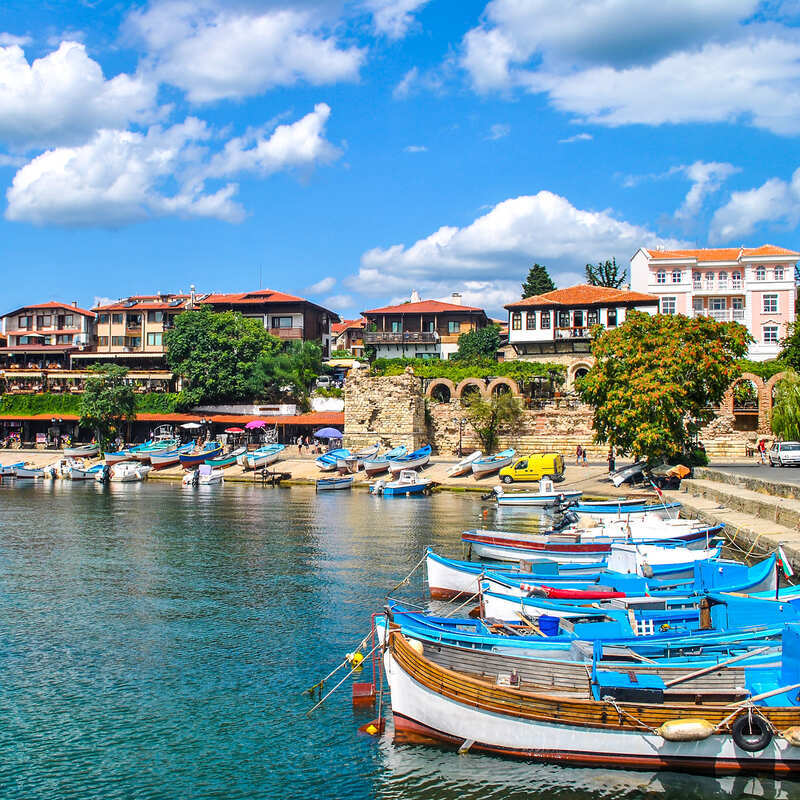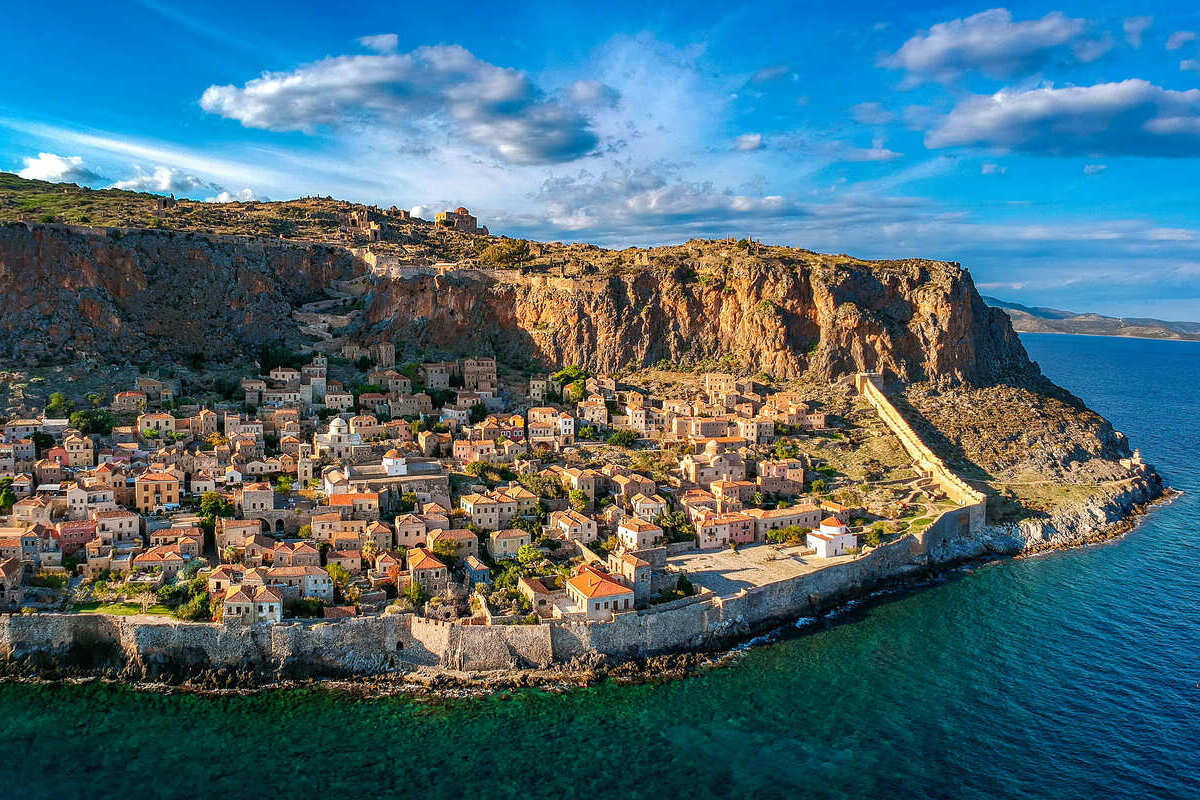Share the article
Last updated
Dubrovnik is one of the most popular summer destinations in Europe, not only because of its balmy and coastal location, but mainly thanks to its picturesque character: we’re talking fairytale fortresses, cobbled streets leading to hidden courtyards and Romanesque churches.
You know, it’s almost like it belongs in an epic TV show about a medieval fantasy world where dragons paraded through the sky… the only major drawback?
For a city so small, with only 42,000 inhabitants and such a small historic center, it is an absolute gong toneespecially in the warmer months.

It’s when a majority of cruise ships start sailing past the increasingly busy port that it becomes virtually impossible to walk the world famous Stradun without accidentally bumping into someone, and good luck trying to get a clear shot in front of the grams (even if you get up with the sun).
Fortunately, you don’t have to go to Croatia’s crowded Adriatic gem to see a well-maintained walled city. After all, this is still the Old Continent, and it is 4 other equally beautiful gems (also coast) that the good old ‘Dbv’ could make to blush:
Monemvasia, Greece


A hidden gem of the Greek mainland, away from the overtoured islands and development zones, Monemvasia is a small town bordered by the azure waters of the Myrtoan Sea, an arm of the wider Mediterranean Sea, inhabited since at least the sixth century.
It is one of the oldest such settlements in Europe, and one that has largely retained its ancient character, with no modern buildings to be found in the historic zone, which is instead dominated by Byzantine churches and legendary stone houses.


It consists of both upper and lower towns, all guarded by a series of impenetrable defensive walls and connected by a complex maze of cobbled alleys – does this sound like Dubrovnik?
Well, it’s not far away, except that Monemvasia receives much less tourists:
Unlike its Croatian equivalent, Greece’s ‘Gibraltar’ is not overrun with visitors as it belongs to one of Greece’s less explored regions, the Peloponnese, a peninsula that recorded just 146,000 arrivals last year (not all of whom will specifically visit Monemvasia ) .
Kotor, Montenegro


Just under a two-hour drive from Dubrovnik, in neighboring Montenegro, Kotor is often thought of Dubronvik’s smaller sister: it is hidden in the inner part of the Bay of Kotor, an inlet of the Adriatic Sea, and, like its Croatian counterpart, belongs to the Dalmatian coast.
Kotor meets all the requirements of ‘Dubrovnik’: it is surrounded by medieval fortifications, which surround rows and rows of houses with terracotta roofs, and there are beautiful Adriatic beaches nearby, with the difference that it has yet to succumb to the whims of foreign visitors.


The old town is a place where locals still live, do business and socialize, apart from an exclusive Airbnb zone and a tourist playground, and despite the steady increase in tourism in recent years due to the growing popularity of Montenegro, it is nowhere near the hustle and bustle of Dubrovnik.
As a result, you can sometimes expect cheaper accommodation in the heart of the city as cheap as $72and lower consumer prices, because despite the widespread use of the euro in Montenegro, the country is not officially part of the eurozone nor is it a member of the European Union.
Tallinn, Estonia


Perhaps one of Europe’s most beautiful but lesser-known capitals, Tallinn is located on the Baltic coast in the icy north of the continent.
Although it’s not your traditional summer destination (it’s never really hot in Estonia), it’s still worth a visit purely for its unparalleled architectural wealth.
Tallinn’s Old Town is as perfectly preserved as it was five or six centuries ago, with the historic Town Hall still towering above the winding streets and courtyards below, the imposing cathedral and majestic bulwarks and towers forming a cityscape fit for a postcard seems. .


It’s one of the few UNESCO World Heritage Sites in Estonia, and we don’t understand why there are so few tourists – especially Americans – when it literally looks like it cut from a Disney movie (except it’s the real deal).
Accommodation in Tallinn is also incredibly affordable by European standards, making it a budget-friendly city break: in the summer, while everyone is heading to Croatia, Italy, Greece and the like, you can book single rooms in the heart of the city from just $57 per night.
Nessebar, Bulgaria


Back to the Balkan Peninsula, Nessebar is the jewel of the Bulgarian coast, and the bucket list destination you never knew you needed as a history buff: sitting on a small island connected to the mainland by a newly built bridge, it is a city museum with more than three millennia of collected heritage.
A UNESCO World Heritage Site, Nessebar was originally founded as a Greek settlement in ancient times, and over the centuries that followed it became part of several successive empires, each leaving their own mark on this compact, fortified port.


Apart from the city walls that line the rugged shores of the islet, Nessebar is home to a wealth of Byzantine churchestraditional wooden Bulgarian dwellings and several Greco-Roman ruins, and in summer temperatures become as hot as in Mediterranean Europe.
Luckily for beachgoers, nearby Sunny Beach offers endless miles of golden sand bordered by azure waters – remember, the Black Sea is only black in the sea. name – and all-inclusive resorts such as those on the ocean Helena Zand for just $136 per night.


SUBSCRIBE TO OUR LATEST POSTS
Enter your email address to subscribe to the latest Travel Off Path breaking travel news, delivered straight to your inbox.
This article originally appeared on TravelOffPath.com
The opinions expressed here are solely those of the author, and not those of any bank, credit card issuer, hotel, airline or other entity. This content has not been reviewed, approved, or otherwise endorsed by any of the entities included in the post.




